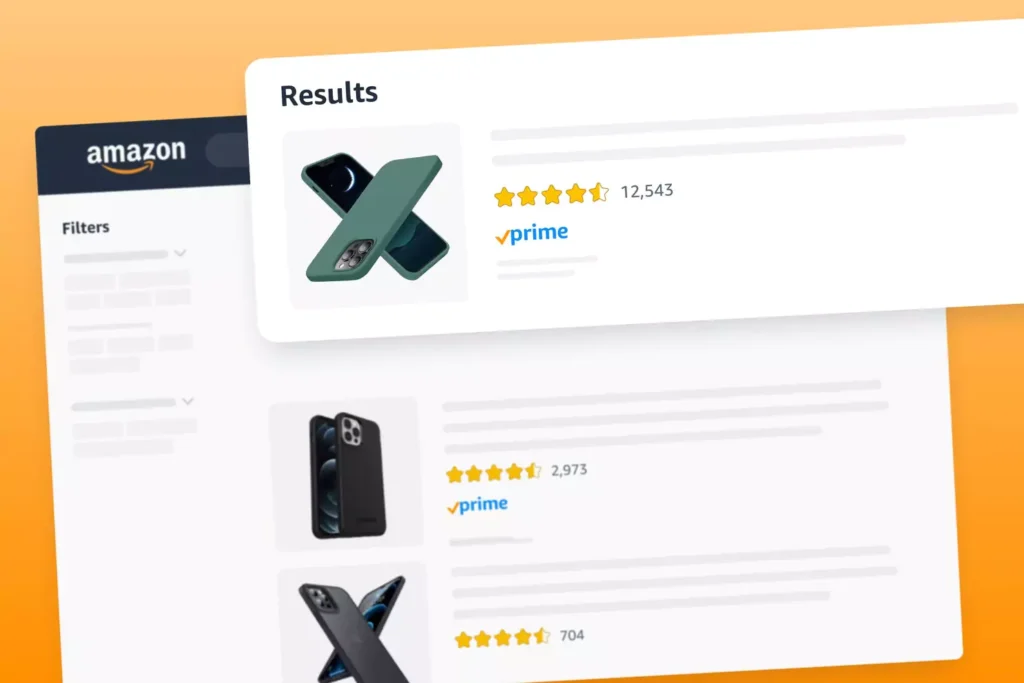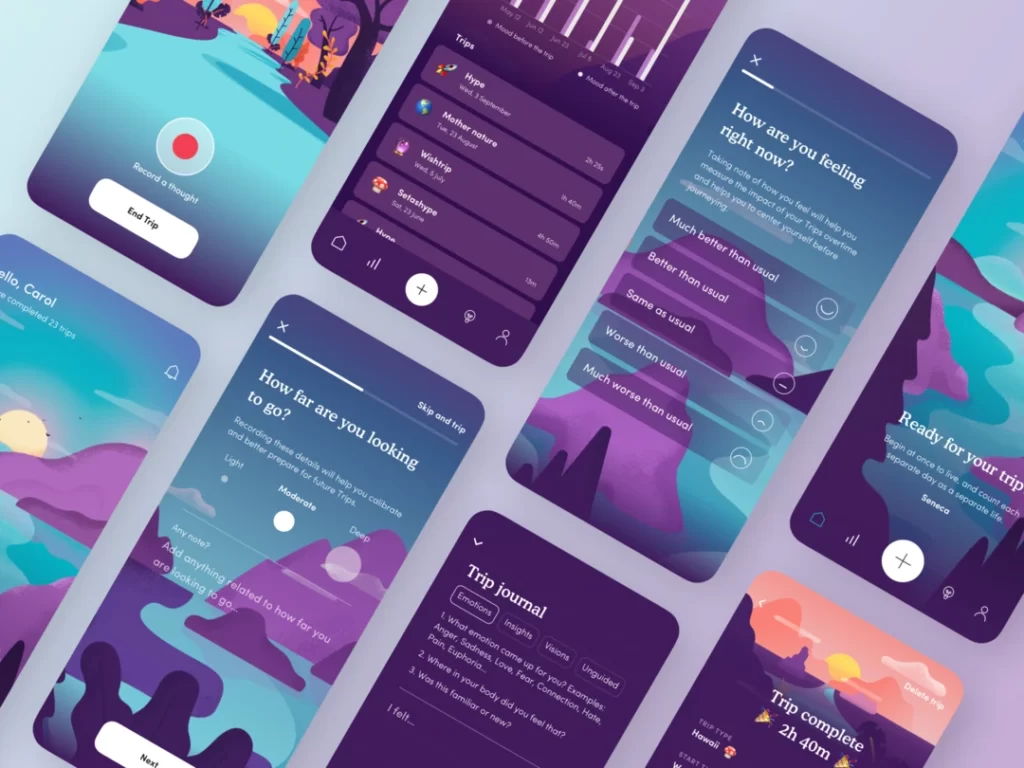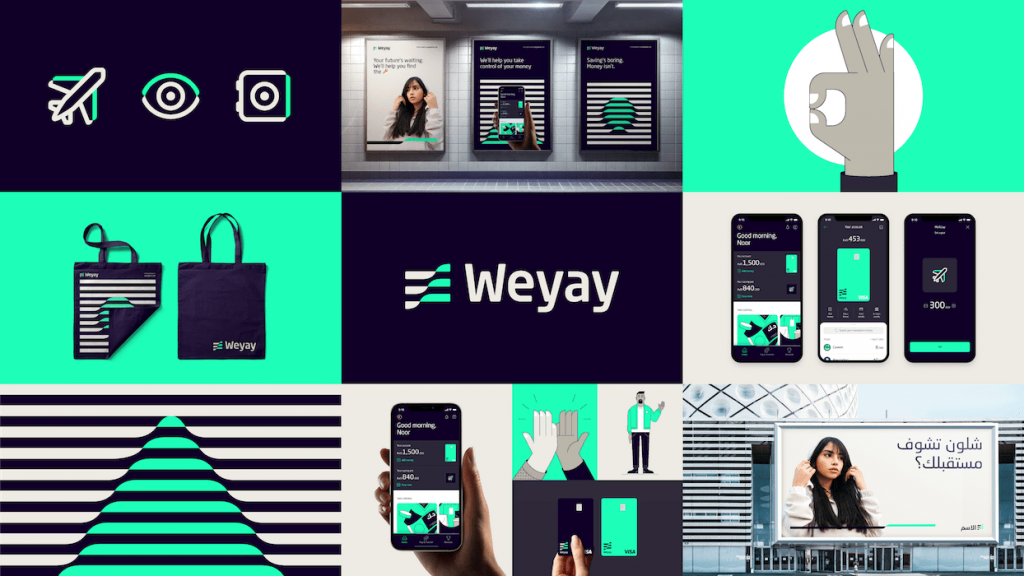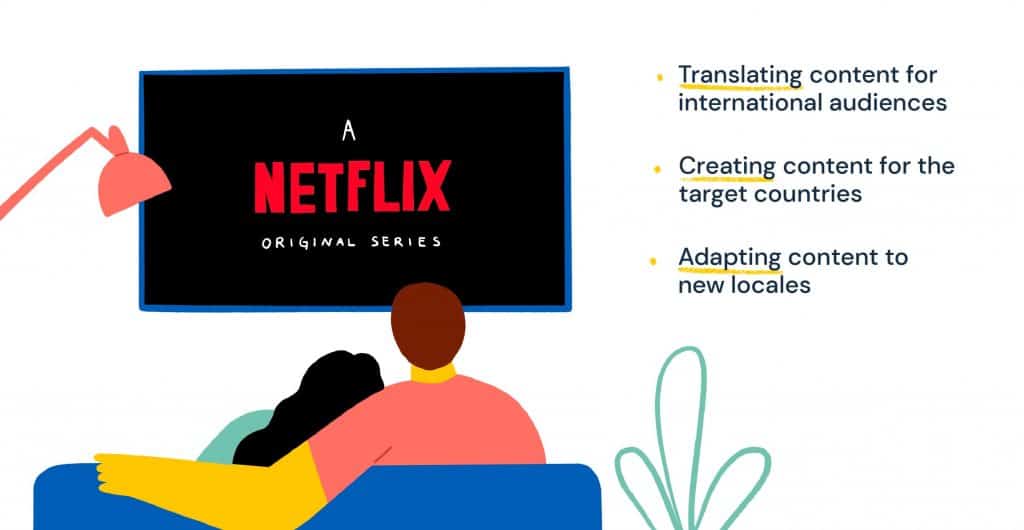What is Digital Branding? Benefits & Strategies
Digital branding is establishing a brand identity and reputation online through the strategic use of digital media and technology platforms. As consumers increasingly go online to research products, services, and businesses before making purchases, having a thoughtful digital branding strategy is more critical than ever for companies that want to attract and retain customers in the digital age.
Table of Contents
Defining Digital Branding

Digital branding builds upon traditional branding principles but applies explicitly to digital channels and spaces. Some key things that set digital branding apart include:
Reaching Digital Audiences
Digital branding focuses on reaching target audiences through digital touchpoints like websites, social media, mobile apps, online ads, email marketing, and more. Marketers utilise data and analytics to understand digital consumer behaviour and connect their branding to where these audiences spend their time online.
Adapting Branding for Digital
Branding must be adapted from visual identities to messaging to stand out and resonate across different digital environments. Factors like smaller screens, platform norms, algorithms, and competing information change how branding elements like logos, taglines, imagery, and voice must come together digitally.
Interactive Experiences
Unlike traditional media, digital channels allow for interactive, personalised experiences between brands and audiences. Digital branding values two-way engagement opportunities and leveraging data and behavioural insights to serve individuals with relevant, impactful brand experiences.
Agile Brand Management
The digital landscape evolves quickly. Digital branding requires brands to take an agile, always-on approach to managing brand identity and reputation across the digital ecosystem to keep pace with changes in consumer behaviour and technology innovations relevant to a brand.
The Importance of Digital Branding
In today’s highly digital world, focusing brand-building efforts online provides a variety of benefits:
Increased Visibility
Implementing tactics like search engine optimisation, content creation, and social media branding makes brands more visible in online searches and spaces where target audiences actively spend time. Greater visibility gives brands access to larger markets.
Enhanced Consumer Insights
Detailed analytics and data collection capabilities in digital channels provide brands with rich insights into current and prospective consumers—from demographic data to behavioural patterns to purchase intent signals. These insights allow brands to improve consumer targeting and experiences.
Differentiation
The digital landscape is increasingly crowded. Distinct, consistent digital branding helps set brands apart from competitors, clearly communicating what makes them different and valuable.
Trust and Loyalty
Thoughtful digital presence and engagement help brands connect with consumers to earn long-term trust and loyalty. People likely will not buy from brands they do not trust.
Future Readiness
Digital’s role in commerce and society will only intensify moving forward. Brands investing in digital branding today will ensure relevance both now and in the future consumer landscape, which is sure to be even more digital-driven.
Cost Effective Reach
Many digital branding tools and tactics like social media, email, and content marketing provide extremely cost-efficient ways for brands to reach large volumes of potential customers globally.
Digital Branding Elements

Several key elements work together to build strong brands in digital environments. Core elements include:
Brand Messaging and Positioning
A brand needs clear messaging and positioning to anchor its digital presence. This means definitively outlining what a brand stands for, its personality and voice, why it is different or better than alternatives, and what value it brings to its target audience. Messaging should guide branding expressions across digital touchpoints.
Visual Identity System
Visuals like colour schemes, logos, iconography, typography, and image styles comprise a brand’s visual system for instant recognition. These elements get adapted to perform digitally on small screens, apps, icons, videos, social networks, and more.
Personality and Tone
A consistent personality or brand voice with an appropriate tone matching digital platform norms and audience expectations helps content stand out from competitors. Personality gives life to branding online.
Consumer Insights
Digital analytics provide data on current and potential consumers to guide targeting and refine messaging/positioning to be relevant. Consumer insights also directly inform experiences and content.
Website/Landing Pages
A website is often a consumer’s first digital brand exposure, making an effective branded site critical for awareness and first impressions. Websites distil broader branding into key pages and call to action.
Social Media Presence
Strategic social media branding reaches massive existing platforms of target audiences in authentic ways by adopting native content styles and norms on each network.
Search Visibility
Optimal search engine optimisation and pay-per-click ad messaging increase branding visibility in critical consumer discovery moments through search engines like Google.
Content Marketing
Ongoing creation and distribution of digital content like blogs, videos, and podcasts engage audiences by offering valuable, entertaining information carefully aligned with brand messaging goals.
Reviews and Testimonials
User-generated content like reviews, ratings, social shares and testimonials boosts brand credibility. Digital branding aims to encourage and highlight positive word-of-mouth.
Advertising and Promotion
Paid ads, sponsorships, email marketing, and other promotions expose branding to new audiences while reinforcing messaging with existing audiences. Digital allows refined, data-driven targeting.
Best Practices for Digital Branding

Specific best practices drive success when building brands digitally:
Lead With Purpose and Values
Brands that communicate an ethical purpose and values that benefit audiences and society perform better long-term than solely self-interested brands. Digital culture rewards transparency and rejects insincerity.
Obsess Over Your Audience
Focus relentlessly on online target audience needs, problems, desires, and behaviour patterns. Build branding around meaningful insights that improve audience lives.
Be Genuine and Authentic
In an oversaturated media climate flooded with branding messages, audiences crave authentic, candid expressions over overt sales pitches. Prioritise authenticity.
Consistent Omnichannel Branding
As consumers engage across many digital touchpoints, ensure branding remains cohesive. Consistency and reinforcement across channels strengthen recognition and retention.
Monitor Your Digital Footprint
Actively manage brand presence across reviewer sites, social networks, blogs, and anywhere users discuss brands. Join conversations and address issues.
Set Specific Goals
Tie digital branding KPIs directly to key business and brand health metrics. Continually evaluate effectiveness at driving outcomes like awareness, consideration, sales, and loyalty.
Make Mobile Branding Priority #1
With mobile internet usage dwarfing desktops, relentless focus on mobile-first branding optimised for smaller screens and messaging clarity proves critical.
Keep It Simple
The complex digital landscape demands simplicity for branding to stand out. Streamline messages and design visual identities flexible enough for endless applications without excessive variation dilution.
Always Be Iterating
Regularly refresh branding expressions to keep pace with digital environment dynamics, stay culturally relevant, and leverage new technologies.
The Digital Branding Process

Building effective digital branding requires an orchestrated process that begins with planning and content discovery before creative development and implementation across digital channels—along with continual optimisation fueled by performance data.
Key process steps include:
Brand Positioning Strategy
Define brand foundations like target consumers, competitive differentiators, persona profiles, and brand promise models tying business offerings to audience benefits, plus mission/vision/values guiding messaging. Conduct market research to understand digital consumer behaviour patterns and brand perceptions deeply. Synthesise learnings into an authentic brand purpose and platform.
Audit Current Brand Assets
Catalogue all current brand assets, from visual identities to established messaging and content to branded digital properties. Assess technical elements like website platforms, plus evaluate effectiveness by consumer KPIs like engagement and sentiment. Identify strengths to amplify and weaknesses requiring improvement.
Set Digital Branding Objectives
Outline specific, measurable objectives digital branding aims to achieve by setting timelines based on business and brand goals. Reach, revenue, loyalty boosting, and other common digital KPIs provide tracking for return on branding investment.
Develop Content Strategies
Map out content themes and types across formats from articles to social videos to ads that help communicate priority brand stories aligned to objectives. Plot an editorial content calendar balancing evergreen and newsworthy hooks optimised for search and social spread.
Creative Design Sprints
Conduct creative sprints rapidly ideating and prototyping new branding concept executions across digital and experiential touchpoints. Test new visual identities, thematic slogans, video content samples, website page layouts, ad concepts, and product packaging ideas. Validate creative appeal and ease of comprehension among target consumer groups through surveys, focus groups, or consumer panels.
Digital Asset Production
Spin up collaborative teams blending appropriate creative and technical roles to produce prioritised digital branding assets from refreshed visual guidelines to reimagined website pages and navigation to video explainers and social content expansions per the digital content calendar.
Technical Implementation
Deliver assets at scale across digital ecosystems through technology integrations. This includes migrating new websites and apps, large-scale content uploads, executing high-volume email campaigns, launching advertising creatives on ad networks, building machine learning algorithms for customisation feeds, and syncing augmented reality objects. API connections between systems enable dynamic branding.
Launch and Promotion
Launch updated branding across digital channels through a coordinated unveiling campaign mixing owned, earned and paid activations promoting fresh branded content that piques audience interest. Pay-to-play branding impressions via social/search ads at scale. Outreach to media and influencers to achieve virally earned media moments.
Continual Optimisation
With the new digital branding market, track performance through real-time data analytics at granular levels, assessing engagement, sentiment, conversions, and business impact. Run regular surveys. Combined with other market feedback mechanisms like reviews or support tickets, optimise branding and experiences based on consumer signals through iterative changes.
Digital Branding Key Metrics and KPIs
Digital analytics empower data-backed optimisations rooted in quantifiable branding performance indicators rather than hunches. Brand marketers track metrics spanning:
- Brand search volume and rank
- Website visitors and traffic sources
- Social followers and content reach
- Advertising reach and frequency
Engagement
- Time-on-site/scroll depth
- Social engagement rate
- Email open and clickthrough rate
- Content downloads, comments, and shares
Sentiment
- Brand mention sentiment analysis
- Product reviews and rating breakdowns
- Feedback and survey metrics
Lead generation
- Site contact form submissions
- Gated content downloads
- Email list sign-ups
Sales Impact
- Site conversion rate
- Online revenue attribution
- Discount and referral code use
Loyalty
- Repeat purchase rate
- Retention rate
- Likelihood to recommend score
Analysing metrics movements over time as digital branding initiatives launch shows impact, allowing refinement of high-level strategies and individual content performance.
Digital Branding Trends and Innovations

Digital platforms and innovations constantly evolve, keeping digital branding an exciting playground for early adopters. Some trends to watch include:
Storybranding
Increasingly emotional, cinematic brand storytelling methods borrow from entertainment mediums vs traditional advertising. The story’s hero character showcases a branding role helping overcome audience challenges.
Interactive Content
Digital content offers more possibilities for audiences to interact, co-create, and choose their journey through technology like questionnaires, configurators, augmented reality try-ons, and intelligent recommendation engines.
Ephemeral Branding
Snapchat pioneered temporary yet repeat branding exposures through features like photos or stories that disappear after 24 hours. The psychology of limited-time branding drives urgency and organic sharing.
Voice Branding
Smart speaker and voice assistant adoption expands voice-first branding optimisation needs, from sonic logos to conversational interactions using natural language processing and AI to deliver personalised vocal experiences.
Micro-Influencer Marketing
The economic realities of über celebrity social media influencers increased focus on niche micro-influencers with extremely targeted but loyal audience bases representing more substantial branding partnership value.
Virtual Reality/Augmented Reality Branding
Spatial computing platforms present new branding canvas possibilities, from virtual reality product demos to augmented reality brand games plastered across real-world surfaces like Snap’s smart glasses.
The breakneck pace of technology shifts will pressure brands to push digital branding into uncharted areas continually. Testing innovative applications that resolve consumer friction while moving the branding craft forward helps future-proof relevance.
Digital Branding Examples From Top Brands

Leading brands deftly apply digital branding principles using diverse strategies tailored to their industry, audiences and objectives:
Netflix
The streaming giant obsesses over data-driven personalisation to serve each subscriber with uniquely captivating branding. Algorithmic video recommendations, dynamic imagery, and individualised promotions based on viewing history keep the experience fresh. Netflix branding has strong consistency across a simple visual system and verbal tone and focuses on compelling storytelling.
Nike
Only some brands have successfully built a powerhouse lifestyle brand around athlete empowerment. Nike dominates digital spaces like Instagram to motivate everyday athletes through aspirational and social visual branding. User-generated content and hashtag campaigns like #JustDoIt activate customers, while product co-creation programs enable tailored designs.
Red Bull
Heart-pumping extreme sports videos logging millions of YouTube views cement Red Bull as a high-energy, adventurous lifestyle beyond just a drink brand. Buzzworthy stunt marketing and content like the Red Bull cliff diving world series quench consumers’ thirst for exhilaration.
Starbucks
The coffee purveyor plates emotional branding as a comforting, personal daily ritual rather than just another beverage. Smooth mobile apps allow easy ordering and payment, while digital community boards and playlists in cafes make the spaces feel like a neighbourhood living room.
McDonald’s
Fun, family-centric digital initiatives counter fast food health perceptions. Snapchat lenses turn customers into cartoon characters, and mobile gaming apps framed around multiline promotions connect McDonald’s deep brand roots to future generations.
Patagonia
Bold environmental activism and corporate social responsibility efforts uniquely build authentic relationships with like-minded outdoor enthusiasts. Striking digital films about sustainability challenges and Patagonia’s WornWear online marketplace supporting used gear resales encourage more profound brand affinity beyond transactions.
Digital Branding Questions (FAQ)
What does it cost to build digital branding?
Costs vary greatly based on project scope and tactics. Budgets are often allocated across market research, branding strategy, digital asset production, technology integrations, advertising media buys, and campaign management fees. Many basic digital branding foundations around owned social media channels, content creation, and community engagement can be activated through internal staff resources or outsourced economically. High-end branding initiatives with expansive cross-channel messaging can land in the million-dollar range when accounting for system implementation and paid media amplification. However, maximising owned, earned, and economic spend channels allow broad audience reach. Define KPIs and work backwards to right-size budgets.
How long does digital branding take?
Comprehensive branding reinventions usually happen over 6-12 months when factoring in extensive research, creative development, and multi-channel implementation. However, digital branding operates as an always-on process. Set quarterly benchmarks to measure impact and recurring optimisations to keep branding relevant amid constant digital shifts. Take an agile approach, testing ideas quickly versus long paralyses, trying to perfect new branding directions.
What digital branding skills are most important?
Skills around translating brand strategy into compelling creative executions remain essential for bringing branding to life digitally across formats from visual to written to video. Also critical are data analytics chops to glean consumer insights and pinpoint branding optimisation triggers. Proficiency across digital channels and understanding of the latest technologies provide a foundation for inventing branding. But most of all, extreme audience empathy and intuition to craft resonant brand-to-human connections make digital branding prosper.
How do you measure digital branding success?
Digital analytics offer robust attribution tracking of how branding stimulates measurable consumer actions aligned to business goals. But also use surveys, interviews and focus groups for qualitative evaluations of brand perception and emotional sentiment shifts among target segments. Successful digital branding shows the impact, uplifting quantitative metrics around sales funnel progression, qualitative brand affinity metrics, and driving clearly defined outcomes.
Why invest in digital branding?
Digital permeates nearly all aspects of life today. People engage with brands predominantly online. So, brands playing solely in traditional spaces miss out on vast audiences and opportunities. Building consistent, thoughtful branding in digital channels gives branding wings for mass exposure and magnification critical to compete now while future-proofing relevance. Especially for digitally native brands, an ecosystem mindset recognising how branded digital properties interoperate drives more powerful network effects, compounding branding abilities over time.
